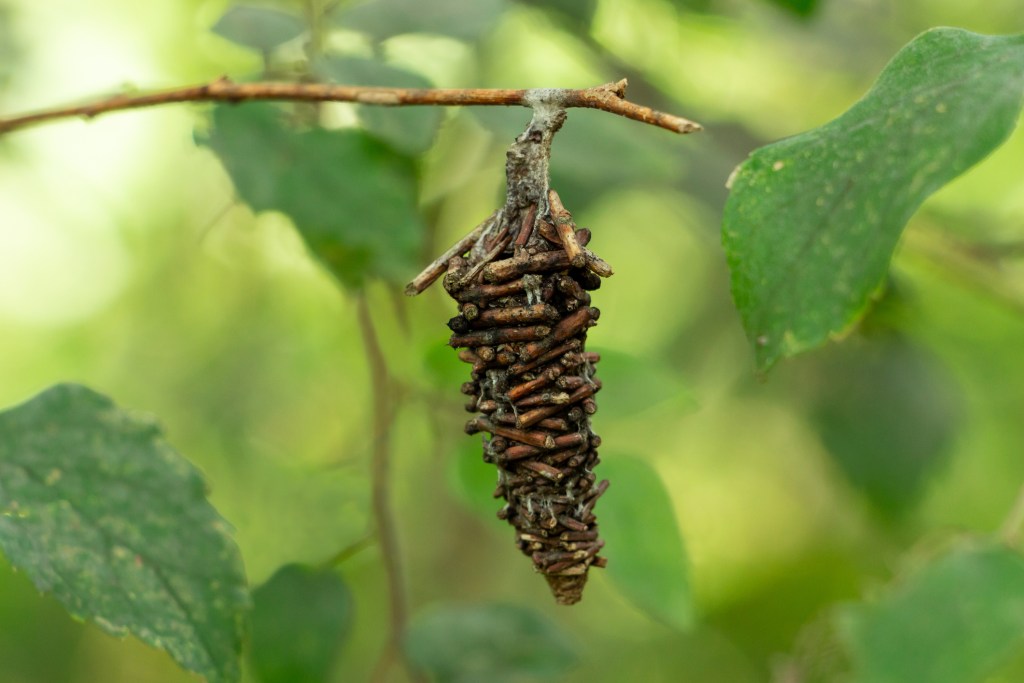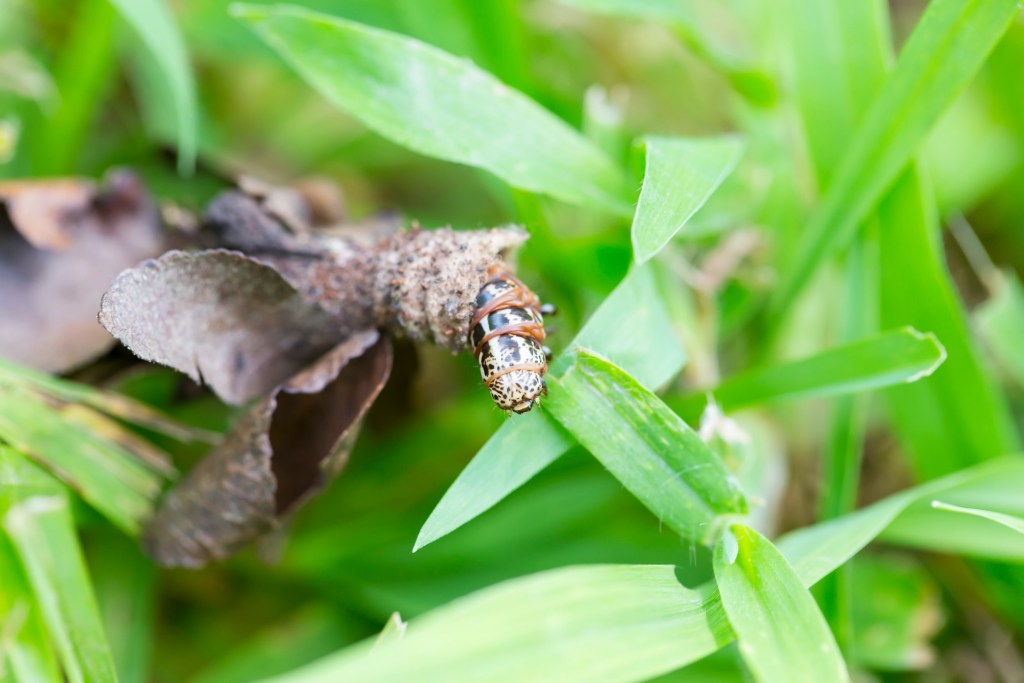From sticky scale bugs on the undersides of leaves to spider mites meshed in webbing, many pest infestations are glaringly obvious. But bagworms operate a little more subtly — they spend a lot of time inside brown “bags” or cocoon-like structures that resemble tree wood and pine cones.
Over time, bagworms work insidiously and can inflict potentially fatal damage on trees, so it’s ideal to get rid of them as soon as you notice their presence. Here are the key things to know about bagworms and what to do when you become aware of an infestation.

What are bagworms?
Here’s the deal: Bagworms aren’t worms. They’re actually caterpillars that turn into moths. Bagworm larvae can camouflage as pine cones or other tree structures in their bag cocoons that measure around 1/4 to 2 inches. These structures generally look like hanging ornaments and are made up of various plant materials. Spending most of their time inside their bags, bagworms commonly come after landscaping trees and shrubs, such as junipers, spruces, pines, and cedars.
Adult maggot-like females can’t fly, but they mate with winged male moths and can lay between 200 and 1,000 eggs per bag. After laying their eggs, the female bagworms fall to the ground and die as the eggs overwinter in their bag sack.
What does bagworm damage look like?
Bagworms generally only feed for six weeks, but they can do a lot of damage in those six weeks, as they hang onto tree twigs and branches with tough silk strands. They can even kill entire trees in a matter of years. The telltale sign of bagworms is the brown cone-like bags they live in.
When it comes to tree damage, you’ll notice brown foliage, dead wood, and disappearing foliage with time. Bagworms can also spread to neighboring landscape plants with a little help from the weather. While pupating, bagworms spin silk threads that can blow via the wind onto nearby trees.

How to get rid of bagworms
Handpicking bagworms
Anytime between winter and late spring is the best time for managing your bagworm problem. The eggs tend to overwinter, hatch in the spring, and start pupating in the summer. The easiest way to manage bagworms is to handpick them during the time frame between winter and spring.
To cut bagworm bags off your plants, use a knife to sever the silk band that bagworms use to wrap around twigs and branches. You can leave the bags out for bagworm predators, such as parasitic insects and birds, but it may be best to destroy or discard the bags yourself.
Avoid letting the bagworm eggs fall to the ground and hatch, as this could get the bagworm cycle going again. You can simply submerge the bagworms in a bucket of soapy water and seal the soaked bagworms off into a plastic bag when you throw them away.
Insecticides
Best left for heavy bagworm infestations, insecticides can be effective, but they don’t always work and may harm animals, such as cats and fish. The best time to use an insecticide is when the larvae have just hatched and are relatively weak — this is around late spring or early summer.
You can harvest bags in the winter or early spring, then leave them in a jar for observation. When you notice the eggs hatching, you can spray your pesticide onto infested trees. Some of the most effective pesticides for bagworms are ones with pyrethroids as the active ingredient, which paralyzes the caterpillars. You can find these insecticides at your local garden center.
By late summer, the pests will have already mated and laid their eggs, so handpicking is your only option because insecticides will not be as effective on adult bagworms or pupating ones. Fortunately, summertime is when it’s easiest to find bagworms because they’re actively feeding; unfortunately, that also means you may see more cone bags emerge and infestations defoliating your trees.
Bacillus thuringiensis
Bacillus thuringiensis, or Bt, is a type of bacteria that you can use to kill pests by keeping them from feeding. It’s commonly found in local nurseries as a spray and isn’t known to be harmful to humans and pets. Again, late spring or whenever bagworms immediately hatch is the best time to apply Bt because larvae are more sensitive around this stage in their lives. Spray your Bt solution every week until you don’t see any more bagworms.

How to prevent bagworms
The easiest way to prevent bagworms is by checking your saplings when you first bring them into your garden. You also want to check your trees often for any signs of bagworms to catch them before they start reproducing rapidly. Also, clean your garden regularly and rake away and destroy egg sacks if you see them.
Using predators to your advantage can also be key in preventing bagworms. To attract bagworm-preying birds, such as woodpeckers and sparrows, set up birdbaths or make your trees more habitable for nesting by leaving thickets to naturally form. Other helpful predators are ichneumonid wasps, which you can attract by planting asters next to vulnerable trees.
Bagworms can evade detection and damage plants in subtle ways, so it’s best to watch out for them in your garden. If you happen to find them taking over your trees and shrubs, fret not. While you can bring in insecticidal sprays or Bt, handpicking them is the easiest way to diminish their population. So be patient and don’t despair — while bagworms work in quiet, menacing ways, it’s a relatively straightforward process to get rid of them.
Editors' Recommendations
- Have a gross mealybug infestation on your plants? Try one of these remedies
- Can you leave beets in the ground over winter? Here’s what to know about storing beets for winter
- What is coconut soil, and how can it make your garden better?
- What you need to know about palm tree care and maintenance
- Everything you need to know about permethrin garden spray, what it does, and how it helps your garden





